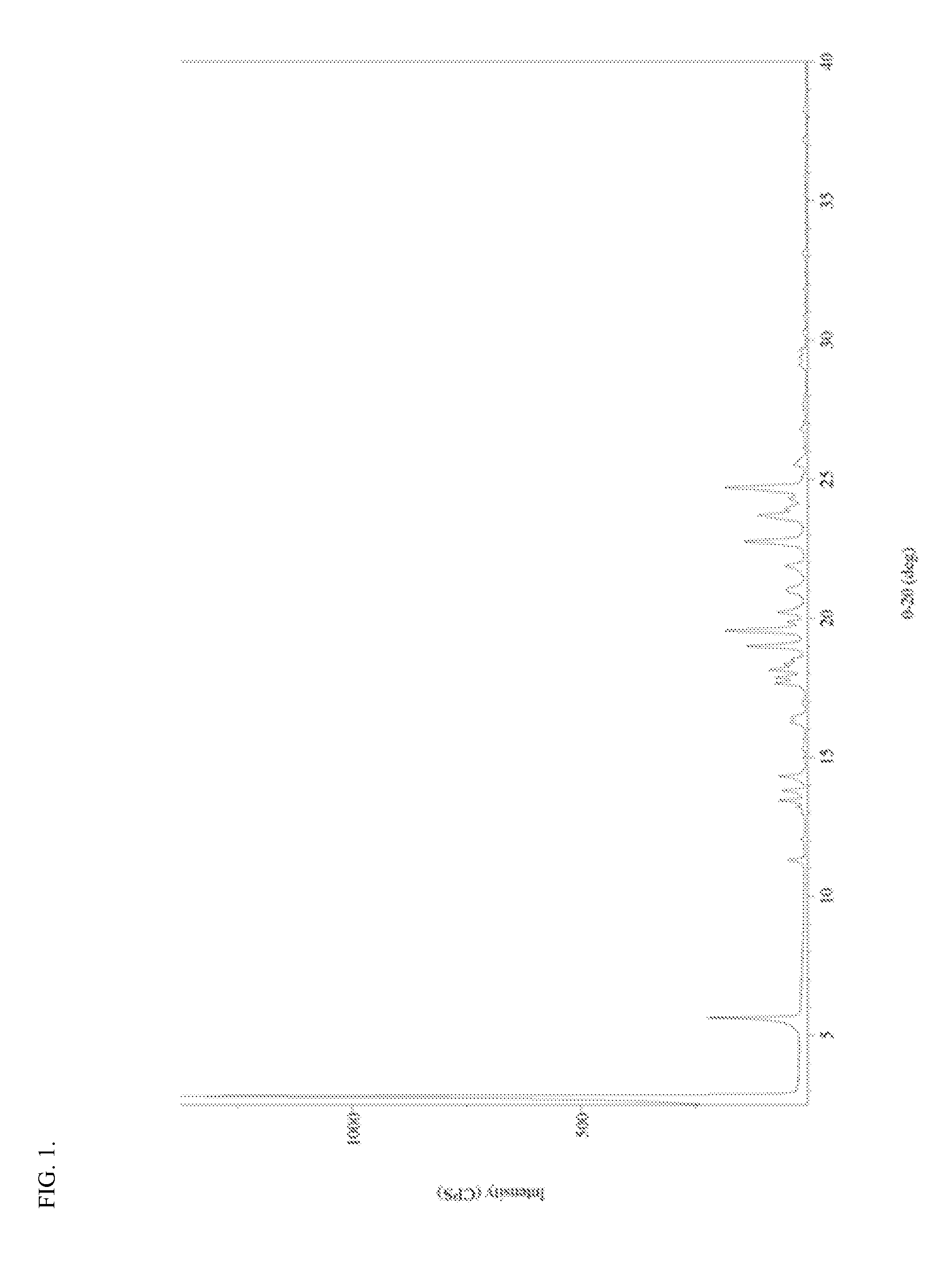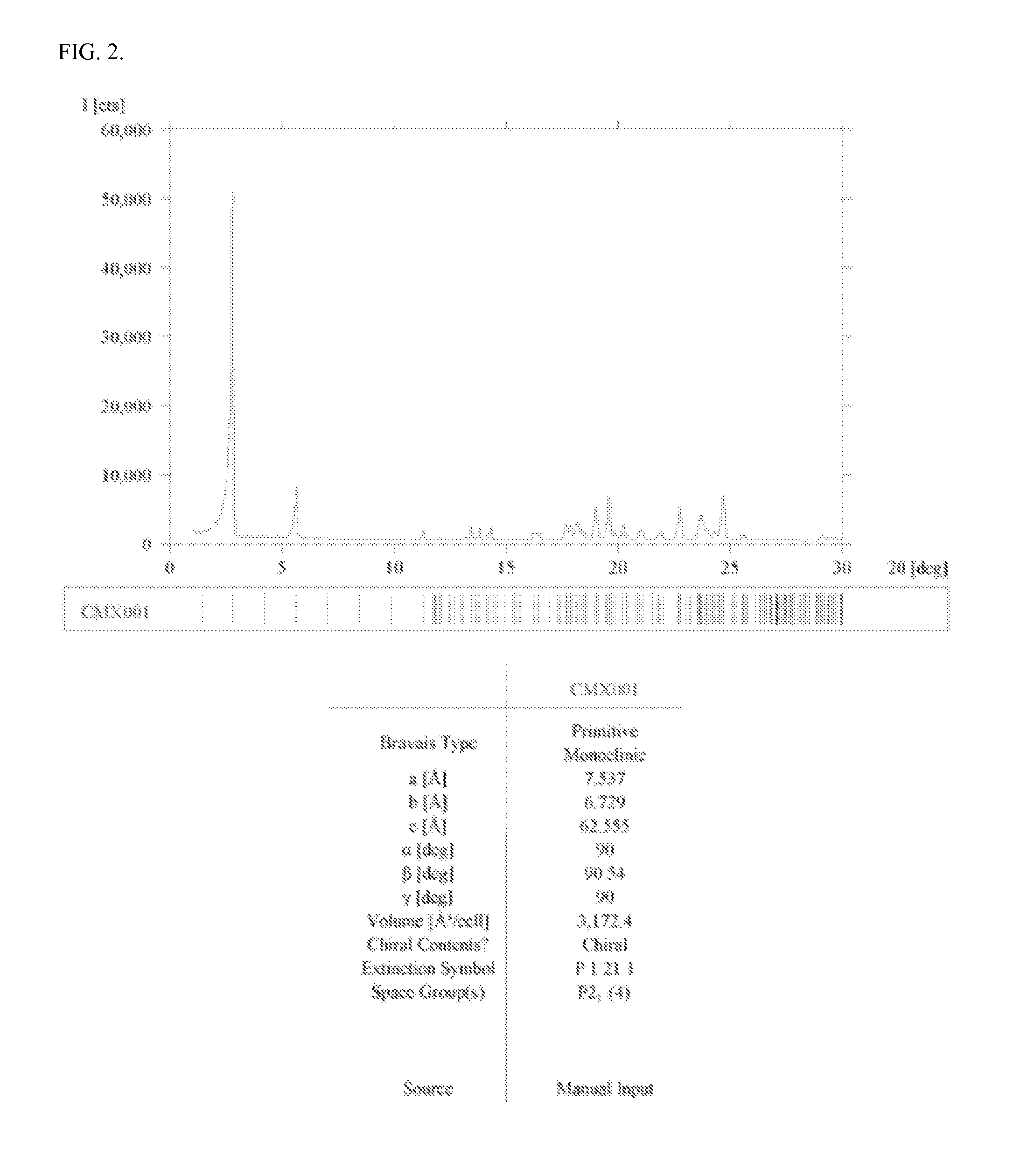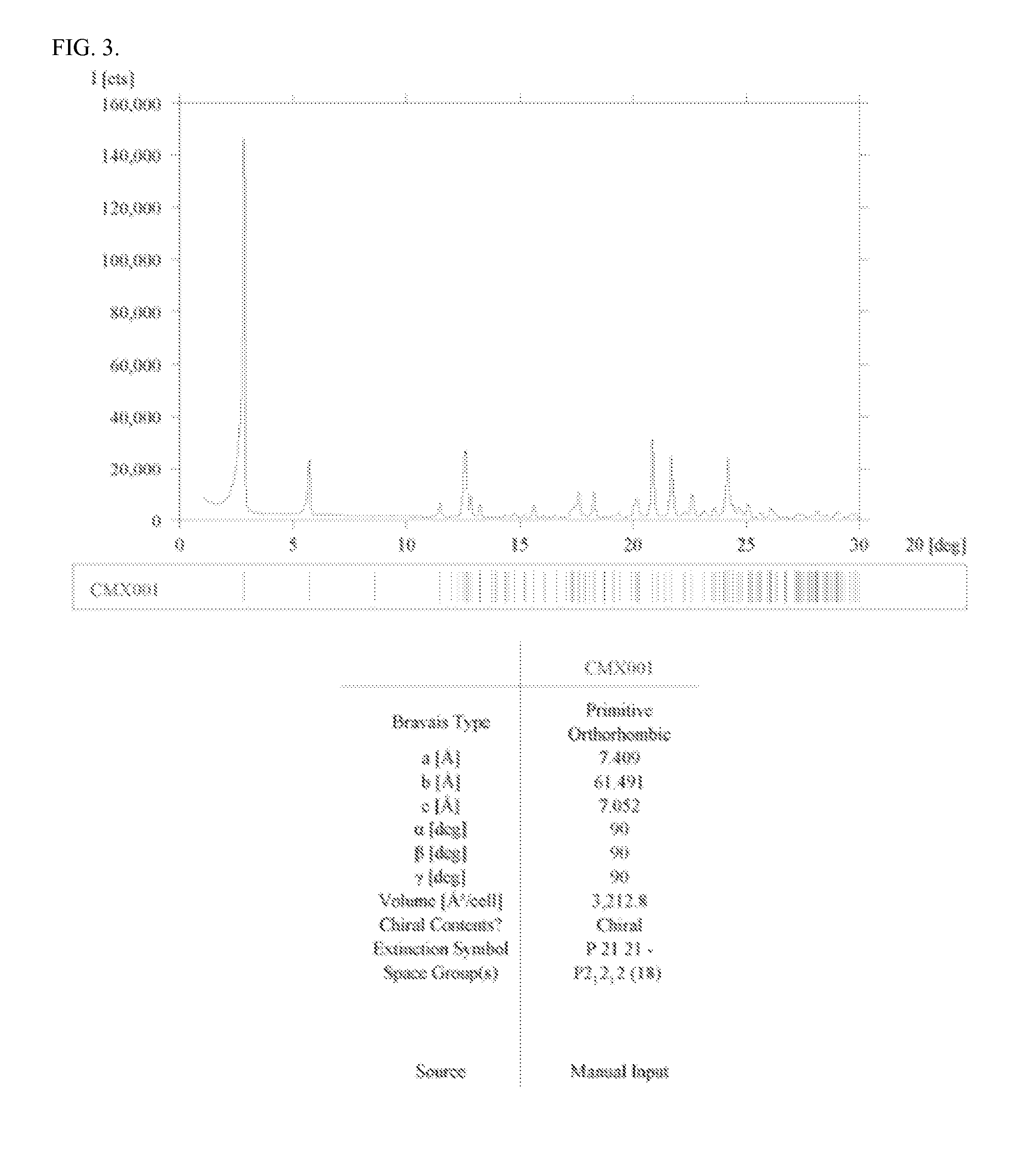Morphic forms of hexadecyloxypropyl-phosphonate esters and methods of synthesis thereof
a technology of hexadecyloxypropylphosphonate and esters, which is applied in the field of solid crystal forms of phosphonic acid, can solve problems such as not routine practice in the art, and achieve the effects of improving process yield, reducing labor intensity, and improving physical properties
- Summary
- Abstract
- Description
- Claims
- Application Information
AI Technical Summary
Benefits of technology
Problems solved by technology
Method used
Image
Examples
example 1
General preparation of phosphonic acid, [[(S)-2-(4-amino-2-oxo-1(2H)-pyrimidinyl)-1-(hydroxymethyl)ethoxy]methyl]mono[3-(hexadecyloxy)propyl]ester (Compound 1)
Step 1: Preparation of (S)—N-1-[(2-hydroxy-3-triphenylmethoxy)propyl]cytosine (Compound 2)
[0385]A slurry of (S)-trityl glycidyl ether (56.4 kg, 178.22 mol), cytosine (18.0 kg, 162.02 mol), and potassium carbonate (2.20 kg, 16.20 mol) in dimethylformamide (73.2 kg) was heated to 85-95° C. After 9 hours the reaction mixture was cooled down to 66-70° C. and quenched with toluene (216.0 kg). The resulting slurry was further cooled down to −10 to 5° C. and filtered to collect a solid. This material was washed with toluene (38.9 kg), re-suspended in toluene (168.8 Kg) at 15-25° C., and once again filtered.
[0386]In order to further remove residual cytosine and process-related impurities a purification cycle was carried out, where the compound was washed with acetone (36.0 Kg), followed by trituration of the solid in water / acetone (90...
example 2
Pilot Crystallizations
[0394]About 5 g of Compound 1 was crystallized from methanol. Effects of different process parameters, including seeding amount (up to 3%), seed temperature (56° C. to 61° C.), process volume (8.5 to 10), starting material (Form II vs. Form H), excess water content (up to 93:7 methanol:water), and agitation rate were evaluated for the crystallization process. Form II was recovered from each of the crystallization attempts, including when the process was not seeded with Form II. Each of the crystallizations utilized a slow cooling process and extended slurry periods.
[0395]SEM images were collected on several of the crystallization samples. Most samples contained a combination of agglomerates and very thin plate-shaped particles. The agglomeration observed may be due to secondary nucleation and cementation of fine particles rather than growth on existing particles.
[0396]Minor differences were observed in the particles and agglomerates generated from the crystalli...
example 3
Methods of synthesis of Compound 1 Form II e.g., commercial synthesis
Scheme 1
[0398]
[0399]
[0400]Representative Material Ratios
[0401]
4-Aminopyrimidin-2(1H)-one 50.4 kg18.0 kg (Cytosine)(453.7 mol)(162.0 mol)(S)-Trityl glycidyl ether158.9 kg56.4 kg(502.2 mol)(178.2 mol)Potassium Carbonate6.6 kg2.2 kg (47.8 mol)(16.2 mol)N,N-dimethylformamide203.3 kg73.2 kgToluene706.4 kg423.7 kgAcetone958.7kg340.9 kgWater40.1 gal90.0 kgYield126.1 kg 45.0 to 145.5 kgto 52.0 kg
[0402]Under a nitrogen atmosphere at ambient temperature a reactor was charged with cytosine, potassium carbonate, (S)-trityl glycidyl ether, and anhydrous N,N-dimethylformamide. The reaction mixture was heated and maintained at 85 to 95° C. until reaction was complete and then cooled to 60 to 70° C. The reaction mixture was quenched with toluene then cooled to 0° C. and filtered. The wet solids were washed with toluene, acetone, acetone / water and then acetone. The solids were slurried in acetone at approximately 40° C. then filter...
PUM
| Property | Measurement | Unit |
|---|---|---|
| temperature | aaaaa | aaaaa |
| 2Θ | aaaaa | aaaaa |
| 2Θ | aaaaa | aaaaa |
Abstract
Description
Claims
Application Information
 Login to View More
Login to View More - R&D
- Intellectual Property
- Life Sciences
- Materials
- Tech Scout
- Unparalleled Data Quality
- Higher Quality Content
- 60% Fewer Hallucinations
Browse by: Latest US Patents, China's latest patents, Technical Efficacy Thesaurus, Application Domain, Technology Topic, Popular Technical Reports.
© 2025 PatSnap. All rights reserved.Legal|Privacy policy|Modern Slavery Act Transparency Statement|Sitemap|About US| Contact US: help@patsnap.com



